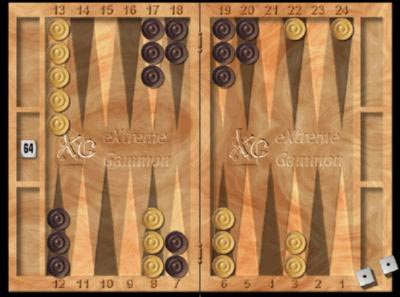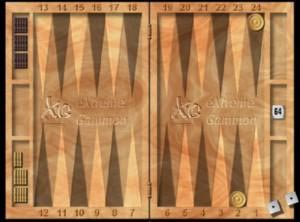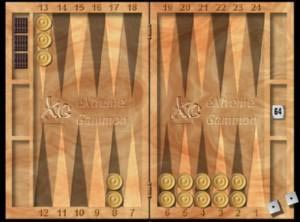
|
Pip Counting |

|
The Ash Dalvi 13 Count, Part 1 |
|
Ashutosh Dalvi March 2011 |
You need to familiarise yourself with the following 3 positions. The idea is that checkers close to these positions will be counted as actually being in these positions and at the end, you do what is called a mental shift (i.e., you correct for the difference compared to these positions).
Simplicity is the key and things don't get much simpler than being told a checker on the 13 pt counts as one 13.
Two checkers equidistant from your bar count as one 13. Therefore, if you have an even number of checkers around the bar, divide the number of checkers by 2 to get your 13 count.
No, I haven't made a mistake in adding. You can do a simple correction at the end. The simple method to correct for counting the checkers in your opponent's home board as two 13s is as follows.
So, in the above case you would have two 13s (26), minus number of checkers (1), minus pipcount from the perspective of your opponent's home board board points (1), equals 24.
The MethodThe method involves counting the 13s and then doing mental shifts. The checkers do not have to be exactly in these positions—they just have to be close.
Example 1
Step 1. Figure out your strategy as to how you will count the 13s.
Step 2. Mental shifts.
Example 2Let's try a more complicated example.
White's 13 Count: Step 1. Figure out your strategy as to how you will count the 13s.
Step 2. Mental shifts.
Black's 13 count: Step 1. Figure out your strategy as to how you will count the 13s.
Step 2. Mental shifts.
Another Position
This gives you another way of counting a checker in your opponent's home board if you can pair it with a checker in your home board. If you look at Example 2 above, the 2 checkers on white's 3 point can be paired with the 2 checkers in his opponent's home board. If you were to just count these 4 checkers, your 13 count would be 2 for each opposite pair which would add up to 4. In order to correct for the checkers in white's opponent's home board not being on his 2 point, you would have to move 1 checker back from the 22 point to the 23 point (−1) and 1 checker forward from the 24 point to the 23 point (+1). This adds up to zero and so there would be no correction. The 4 checkers add up to (13 × 4) 52 pips. Other frequent uses for Position D include:
Advantages of This MethodThere are only 4 key positions to memorise.The 15 checkers on the board can often be treated as a giant cluster. Sometimes you may not get all the checkers into the 13 count. However, it is usually one or two checkers that are on low points that are easy to add on at the end. The method has advantages over standard cluster counting (although I do think cluster counting has its usefulness in certain situations). With cluster counting, you add the big numbers together and you still make mental shifts if the checkers are not precisely in the right place. The Ash Dalvi method actually includes the step of multiplying by 13 in exchange for adding big numbers together. If you learn your 13 times table by heart, you are less likely to make a mistake compared to adding big numbers together. It will also take less time. If all you need to know is who is ahead in the race, you can count the 13s in seconds. If you are two 13s ahead, you are almost sure to be ahead after the mental shifts. If you are one 13 ahead, you are still likely to be ahead but you might have to do the mental shifts. Generally, it seems like a natural method. You start with a bunch of checkers on the 13 pt and a cluster around the bar. Furthermore, general backgammon strategy involves keeping the 13 pt and trying to build points around your bar. So, you have to multiply by 13 in most positions anyway. Other TipsYou can count an 18 point checker as a 13; it has a correction of +5.You can count an 8 point checker as a 13; it has a correction of −5.
Example 3
Once most of the checkers are in the home board, I often combine my method with cluster counting. I can see the 5 prime is 40 pips. So, I will count all 5 checkers outside my home board as 13s and subtract 10 to correct for the 2 checkers on the 8 pt. 13 × 5 = 65 − 10 = 55 + 40 (for the 5 prime with a middle point of 4) = 95. Easy peasy! Don't always break your 10s into 13s. If I have a 5 prime, I know the middle point multiplied by 10 is the total pip count in the prime. I will add this on to the 13 total. In the next article, I will discuss how you might incorporate checkers in your home board into the 13 count. With a little practice, you can count some seemingly complicated positions relatively effortlessly in just a few seconds. You might even find that pip-counting is almost fun. © Ashutosh Dalvi 2011 |

![]()
See also: Other articles on pip counting.
Return to: Backgammon Galore
 Introduction
Introduction





